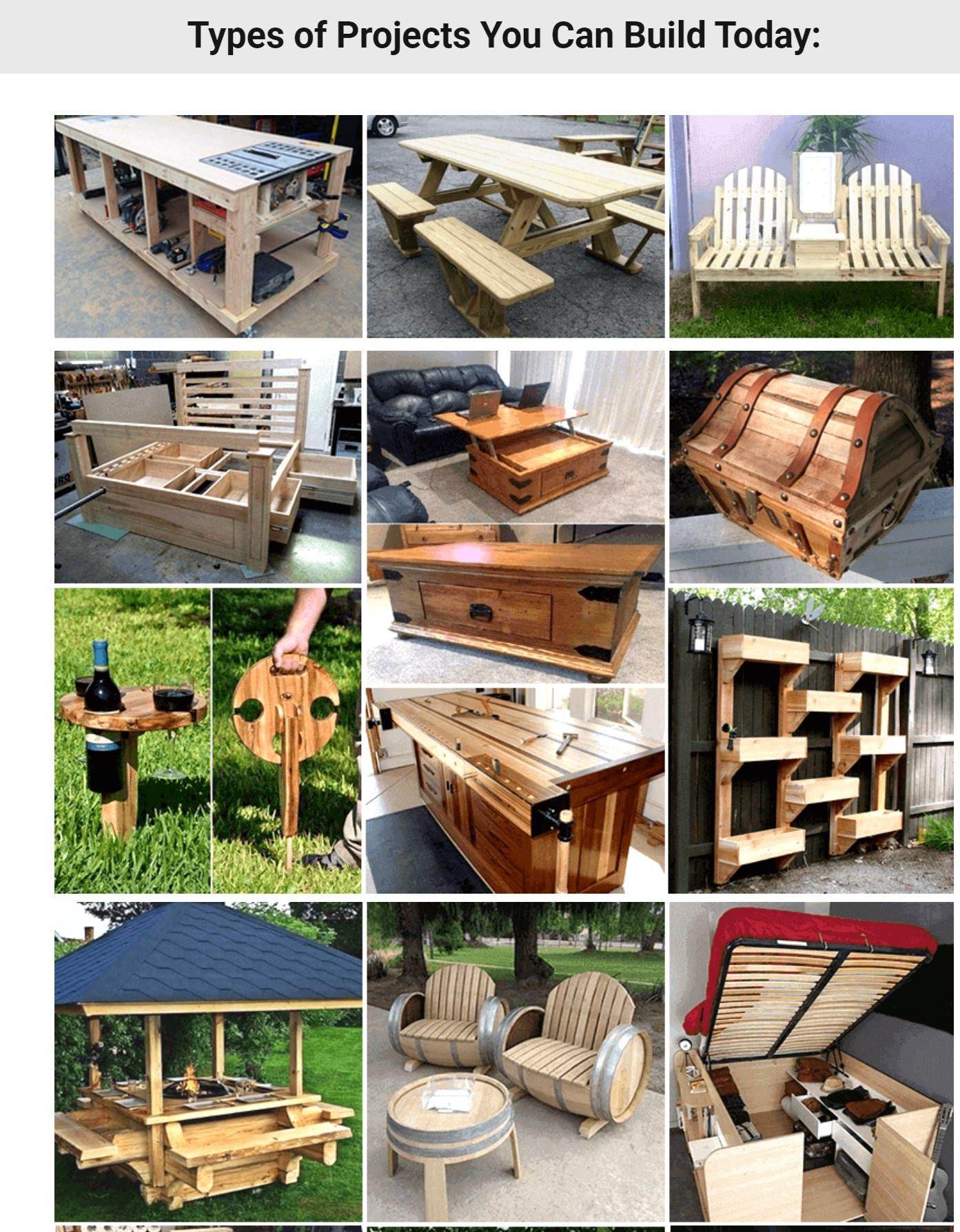Introduction to Woodworking
Woodworking, an age-old craft, has been a cornerstone of human civilization. From the earliest days when primitive tools were used to shape wood for functional purposes, to the modern era where woodworking has become both an art and a profession, the journey has been remarkable. This article aims to provide a comprehensive introduction to woodworking, shedding light on its history, tools, techniques, and much more.
Table of Contents (Outline)
| Headings | Sub-Headings |
|---|---|
| History of Woodworking | – Early Tools and Techniques – Evolution Over the Centuries |
| Basic Tools in Woodworking | – Hand Tools – Power Tools – Safety Equipment |
| Wood Types and Their Uses | – Hardwoods – Softwoods – Specialty Woods |
| Setting Up Your Workshop | – Choosing the Right Space – Organizing Tools and Equipment |
| Fundamental Woodworking Techniques | – Joinery Methods – Finishing Techniques |
| Advanced Woodworking Skills | – Veneering and Inlaying – Turning and Carving |
| Woodworking Safety | – Common Hazards – Safety Protocols |
| DIY Woodworking Projects | – Furniture Making – Toy Crafting – Home Decor |
| The Business of Woodworking | – Starting a Woodworking Business – Marketing and Selling |
| The Future of Woodworking | – Technological Advancements – Sustainability in Woodworking |
History of Woodworking
Woodworking’s roots trace back to ancient civilizations. Early humans recognized the utility of wood and began crafting tools, weapons, and shelter. Over time, as societies evolved, so did the complexity and artistry of woodworking.
- Early Tools and Techniques The dawn of woodworking saw the use of simple tools like stones and bones. These rudimentary tools were used to carve, shape, and join wood. As civilizations progressed, metal tools like chisels, saws, and planes were introduced, revolutionizing the craft.
- Evolution Over the Centuries From the ornate furniture of the Renaissance to the minimalist designs of the 20th century, woodworking has mirrored societal trends. The Industrial Revolution brought machinery, further enhancing the craft’s precision and scale.
Basic Tools in Woodworking
Every craftsman knows the importance of having the right tools. In woodworking, tools can be broadly categorized into hand tools, power tools, and safety equipment.
- Hand Tools These are the backbone of any woodworking workshop. Chisels, saws, hammers, and planes are just a few examples. They require manual effort but offer unparalleled precision. For a detailed list of essential tools for beginners, check out our guide on 10 woodworking tools that beginners need.
- Power Tools Modern woodworking heavily relies on power tools. Devices like electric saws, drills, and routers speed up the process and ensure consistency. If you’re looking for specific tool reviews, our water saw reviews and wood sander guide might be of interest.
- Safety Equipment Safety should never be compromised. Protective eyewear, earplugs, and dust masks are essential to prevent injuries. Dive deeper into safety with our article on essential safety measures in woodworking.
Wood Types and Their Uses
Wood is as diverse as the trees it comes from. Understanding the different types of wood and their properties is crucial for any woodworking project.
- Hardwoods Derived from deciduous trees, hardwoods like oak, maple, and cherry are durable and often used for furniture and flooring. For a more detailed exploration, visit from tree to table: understanding wood types and their uses.
- Softwoods Coming from coniferous trees, softwoods like pine, cedar, and spruce are lighter and ideal for carving and joinery.
- Specialty Woods These are unique woods like mahogany, teak, and rosewood, known for their distinct colors and grains. They’re often used for high-end projects.
Setting Up Your Workshop
A well-organized workshop is a woodworker’s haven. It’s where creativity comes to life.
- Choosing the Right Space Whether it’s a garage, basement, or a dedicated shed, ensure the space is well-lit, ventilated, and spacious enough for your projects. For a step-by-step guide, read the information to setting up a woodworking shop in your garage.
- Organizing Tools and Equipment A place for everything and everything in its place. Pegboards, shelves, and drawers can help keep tools organized and within reach.
Fundamental Woodworking Techniques
Mastering basic techniques is the foundation of any woodworking journey.
- Joinery Methods Joinery is the art of connecting pieces of wood. Techniques like dovetailing, mortise and tenon, and biscuit joinery are essential for creating strong bonds. For a deeper dive, check out joinery 101: an introduction to wood-joining techniques.
- Finishing Techniques A well-finished piece stands out. Sanding, staining, and varnishing enhance the wood’s beauty and protect it from the elements. Learn more about different finishes in our guide on exploring different wood finishes and how to apply them.
Advanced Woodworking Skills
As you progress in your woodworking journey, you’ll encounter advanced techniques that can elevate your projects.
- Veneering and Inlaying These techniques involve adding decorative layers or patterns to a wooden surface, adding depth and character.
- Turning and Carving Using lathes for turning and chisels for carving allows woodworkers to create intricate designs and shapes. Beginners can start with our guide to wood carving.
Woodworking Safety
Safety is paramount in any workshop. Being aware of potential hazards and following safety protocols can prevent accidents.
- Common Hazards From sharp tools to flying wood chips, being aware of potential dangers is the first step to safety.
- Safety Protocols Always wear protective gear, keep tools well-maintained, and follow manufacturer guidelines when using power tools.
DIY Woodworking Projects
Woodworking isn’t just for professionals. DIY projects can be a fun and rewarding way to dive into the craft
.
- Furniture Making Crafting tables, chairs, and cabinets can be both functional and artistic. For inspiration, check out our lists of woodworking products to make and sell and projects that sell.
- Toy Crafting Wooden toys like puzzles, cars, and dolls are timeless and can be cherished for generations.
- Home Decor From wall hangings to lampshades, woodworking can add a personal touch to any home.
The Business of Woodworking
For those passionate about woodworking, turning it into a business can be a dream come true.
- Starting a Woodworking Business From sourcing materials to setting up a workshop, there’s a lot to consider when starting a woodworking business. If you’re wondering about the profitability, our article on most profitable woodworking projects in 2023 might be helpful.
- Marketing and Selling Building a brand, showcasing your work online, and connecting with customers are essential for business success.
The Future of Woodworking
The world of woodworking is ever-evolving, with technological advancements and a growing emphasis on sustainability.
- Technological Advancements From computer-aided design to CNC machines, technology is reshaping the way woodworkers design and create.
- Sustainability in Woodworking With a growing emphasis on eco-friendliness, sourcing sustainable wood and adopting green practices is becoming crucial.
FAQs
What is the best wood for beginners?
Softwoods like pine are affordable, readily available, and easier to work with, making them ideal for beginners.
How can I sharpen my woodworking skills?
Practice is key. Start with simple projects, attend workshops, and learn from experienced woodworkers.
Is woodworking expensive?
The initial investment in tools and materials can be high, but with careful planning and sourcing, costs can be managed.
Can woodworking be a profitable business?
Absolutely! With the right marketing, quality craftsmanship, and a niche, woodworking can be a lucrative venture.
How do I ensure safety in my workshop?
Always wear protective gear, keep your workspace clean and organized, and regularly maintain your tools.
What’s the difference between hardwood and softwood?
Hardwoods come from deciduous trees and are denser, while softwoods come from coniferous trees and are lighter.
Conclusion
Woodworking is a blend of art and science. Whether you’re a hobbyist or a professional, the world of woodworking offers endless possibilities. With the right tools, knowledge, and passion, you can create masterpieces that stand the test of time. Dive into this craft, and let your creativity soar!


